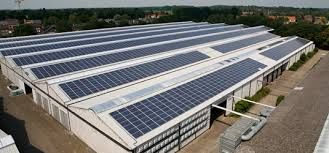The scorching pace of solar power – III
This is the 3rd article in a five part series. The others can be found at: Part I: http://asiaconverge.com/2016/04/is-fear-of-bankruptcy-forcing-oil-rich-saudi-turn-to-solar-power-wait-for-25-april-html/ Part II: http://asiaconverge.com/2016/04/crashing-prices-india-can-gain-immensely-solar-power-space/ Part IV: http://asiaconverge.com/2016/04/india-not-learn-germanys-hermann-scheer-solar-power-model/ Part V: http://asiaconverge.com/2016/04/you-snooze-you-lose-early-entrant-germany-scores-over-india-in-rooftop-solar-power-scheme-html/
There is the crisp static of expectation in the air. Market-watchers know that India has a tremendous advantage when it comes to solar power.
 This is confirmed by India Ratings (or Ind-Ra, a Fitch group company) in its recent report on solar power just last fortnight. It stated that it maintains a stable outlook on the solar energy sector for FY17 (financial year 2016-17). FY15 saw the addition of 1.1 GW of solar power capacity, bringing the total installed capacity to 3.7 GW.
This is confirmed by India Ratings (or Ind-Ra, a Fitch group company) in its recent report on solar power just last fortnight. It stated that it maintains a stable outlook on the solar energy sector for FY17 (financial year 2016-17). FY15 saw the addition of 1.1 GW of solar power capacity, bringing the total installed capacity to 3.7 GW.
This year should see another 1.4 GW being added bringing the cumulative installed capacity to 5.1GW.
While some may view this growth with pleasure, the fact remains that the incremental growth is a very far cry from the 100 GW of additional solar power capacity that the present government wants India to have by 2022. Will the pace pick up? Yes, if some things are done right. The present policies pursued may not bring in the desired result (more on this aspect in the next part to this series of articles on solar power).
It must however be underscored that Ind-Ra, like this author, is convinced that solar tariffs are headed south. It expects tariffs to be around Rs.4/ kWh (during the last round of competitive reverse bidding, tariffs have already touched Rs.4.34 /kWh). This author expects them to tumble still further.
Ind-Ra expects the internal rate of return (IRR) to investors for the projects allotted in FY15 and FY16 to range between 12 per cent-14 per cent, lower than the 20 per cent registered historically. However, “the developer’s ability to raise debt at an attractive cost (typically in foreign currency with a hedging cost of 4 per cent) will improve the IRR further to 14 per cent”. This only means that as developers begin to find the right way to structure solar projects, and the profitability increases, the pace should increase dramatically.
But the biggest bonanza for India could be falling capital costs. As a Bloomberg-BusinessWeek report stated just a few days ago, solar panel costs have already fallen by 40 cents a watt. First Solar Inc has now managed to sell its its panels at prices that are at least 15 per cent less than China’s Trina Solar Ltd. According to that publication, by 2019, First Solar’s module-cost could be as low as 25 cents a watt. That could make solar power cheaper than even thermal electricity. It is possible that solar panels could be available at one-third – if not one-fourth — current prices in India.
 In fact, India’s advantage has been quite well analysed by the latest Economist in its report on solar power . This publication – referring to a report by KPMG – expects the share of solar power to rise to 12.5 per cent in India’s energy mix very soon, compared to just 1 per cent today. In fact, even Coal India, a state-owned company, wants to generate 1 GW of solar power to cut energy bills
In fact, India’s advantage has been quite well analysed by the latest Economist in its report on solar power . This publication – referring to a report by KPMG – expects the share of solar power to rise to 12.5 per cent in India’s energy mix very soon, compared to just 1 per cent today. In fact, even Coal India, a state-owned company, wants to generate 1 GW of solar power to cut energy bills
Ind-Ra believes that developers will favor projects under the Jawaharlal Nehru National Solar Mission (JNNSM) over state projects. This is because of the lower counter-party risk and limited responsibility towards constructing support infrastructure as in the case of solar parks. This, along with increasing competition in the sector, could intensify bidding quotes resulting in a tariff bid of below INR4/kWh.
The reasoning sounds right, but somehow, there are questions which demand answers.
While CERC has pegged capital costs at Rs.5.01 crore per MW of installed capacity, this author believes that costs should soon tumble to almost quarter this level, given the expected fall in both solar panel and battery costs. But even at Rs.2 crore per MW, the setting up of 90 GW of solar power capacity will involve investments of Rs.1.8 lakh crore. Add to this other costs like those relating to land acquisition and transmission infrastructure requirement. Where are the funds going to come from?
Most analysts, including Ind-Ra, expect huge chunks of investment to come in from global investors. But there is an urgent need to rethink policy, and create the right environment for tapping private funds locked up by small individuals. The answer could lie in rooftop solar. That seems to be happening. During November 2014 to October 2015, India added 240MW of rooftop capacity, up from 154MW in the previous year.
But that is just a wee fraction of what needs to be done. More of that in Part IV










































COMMENTS